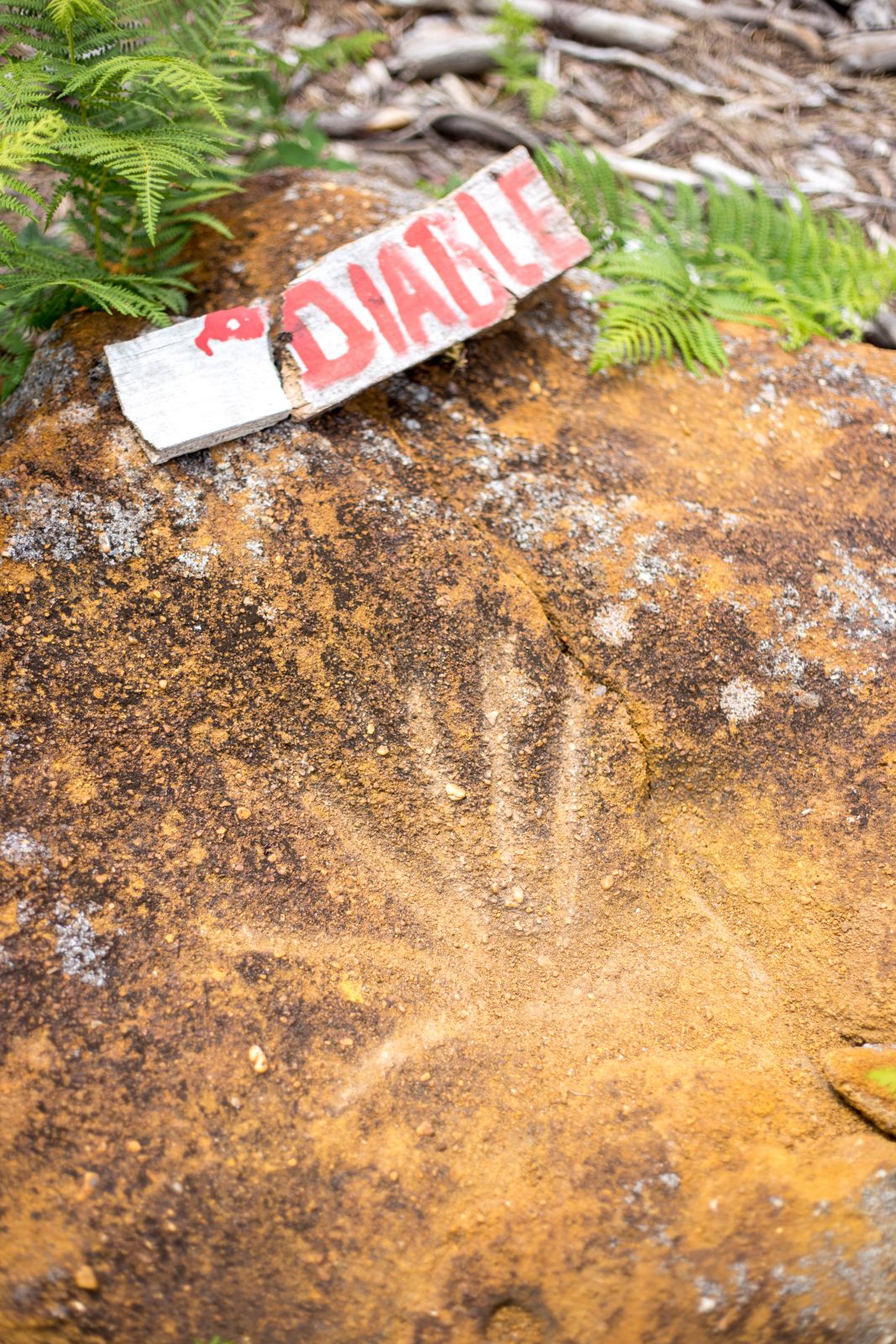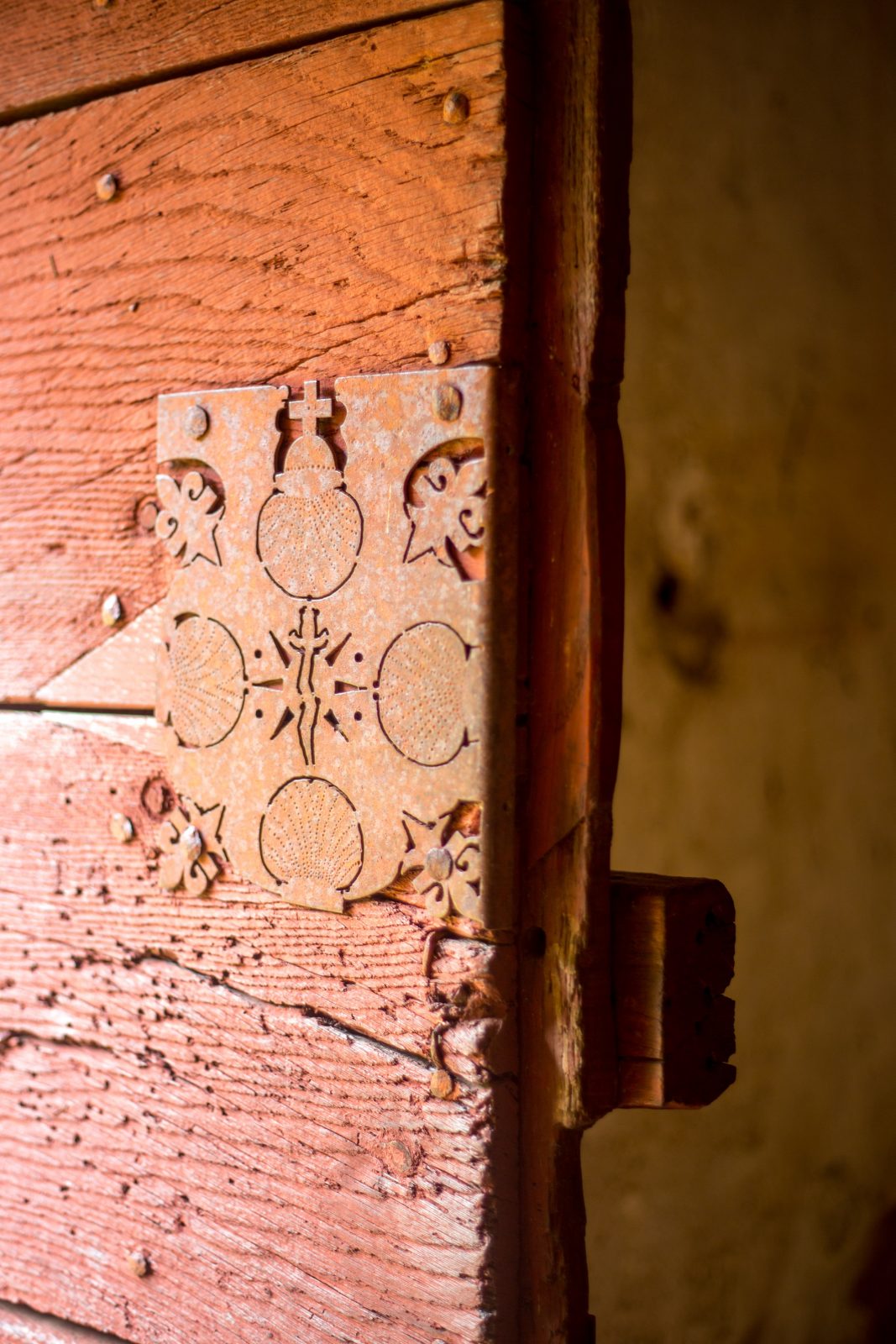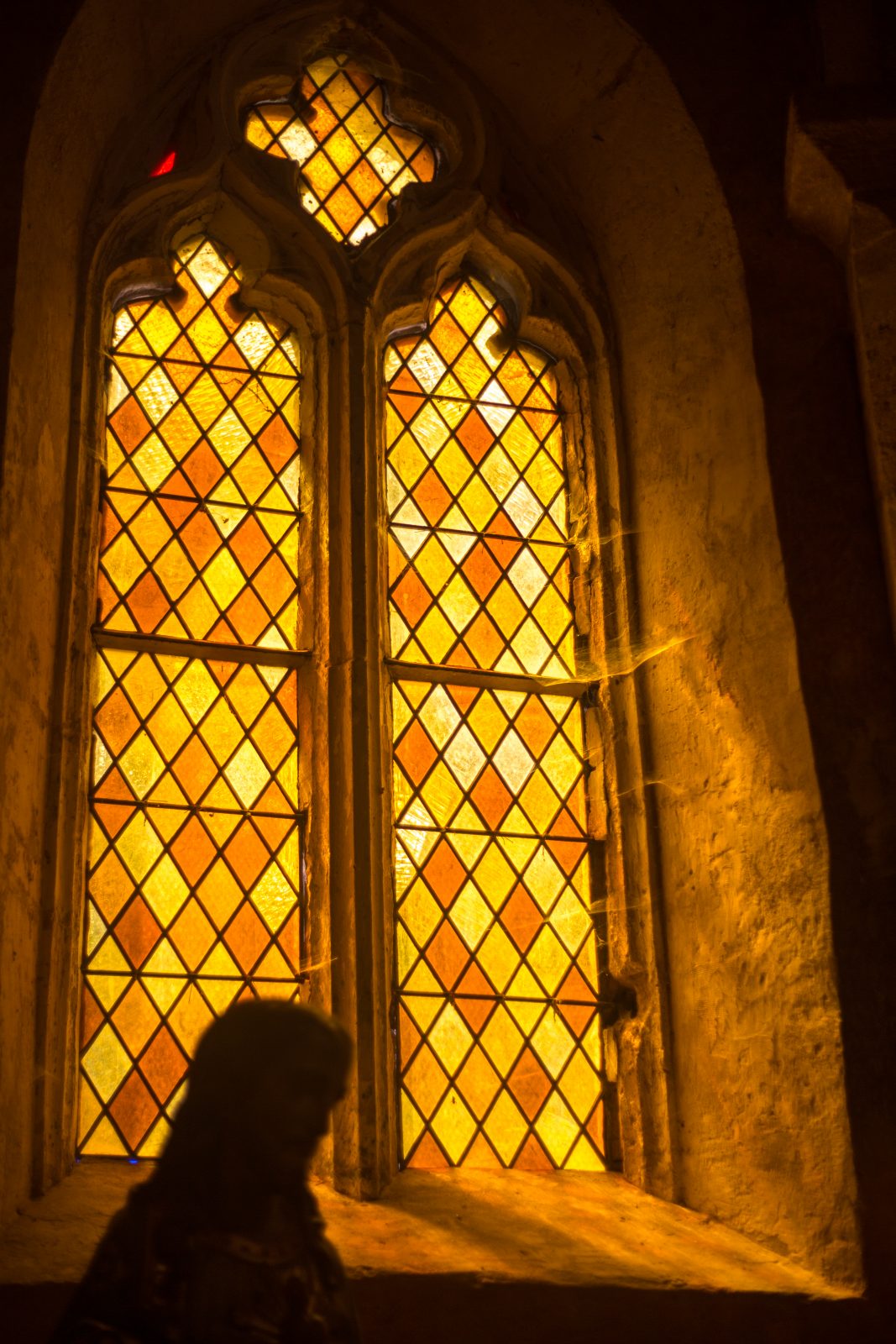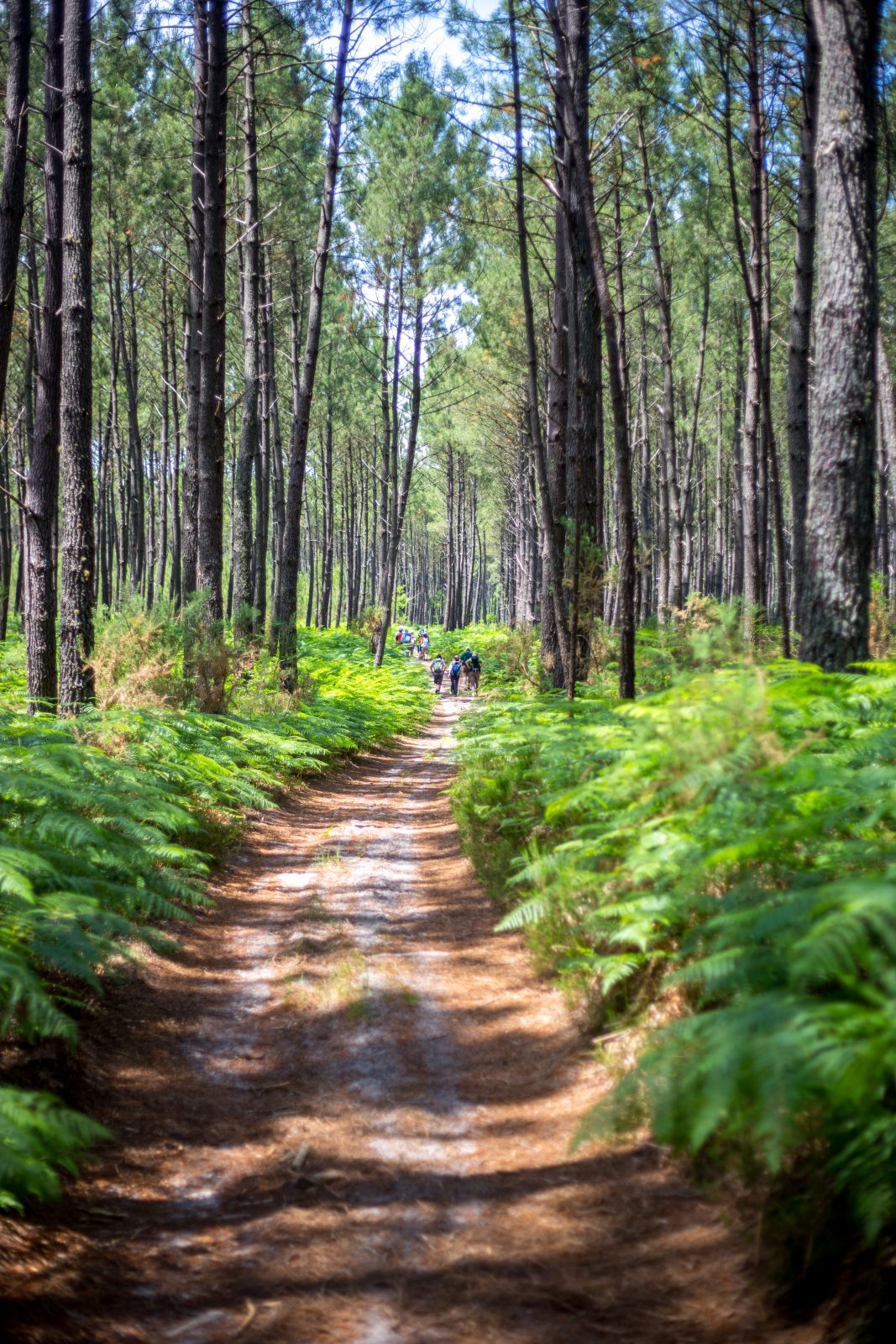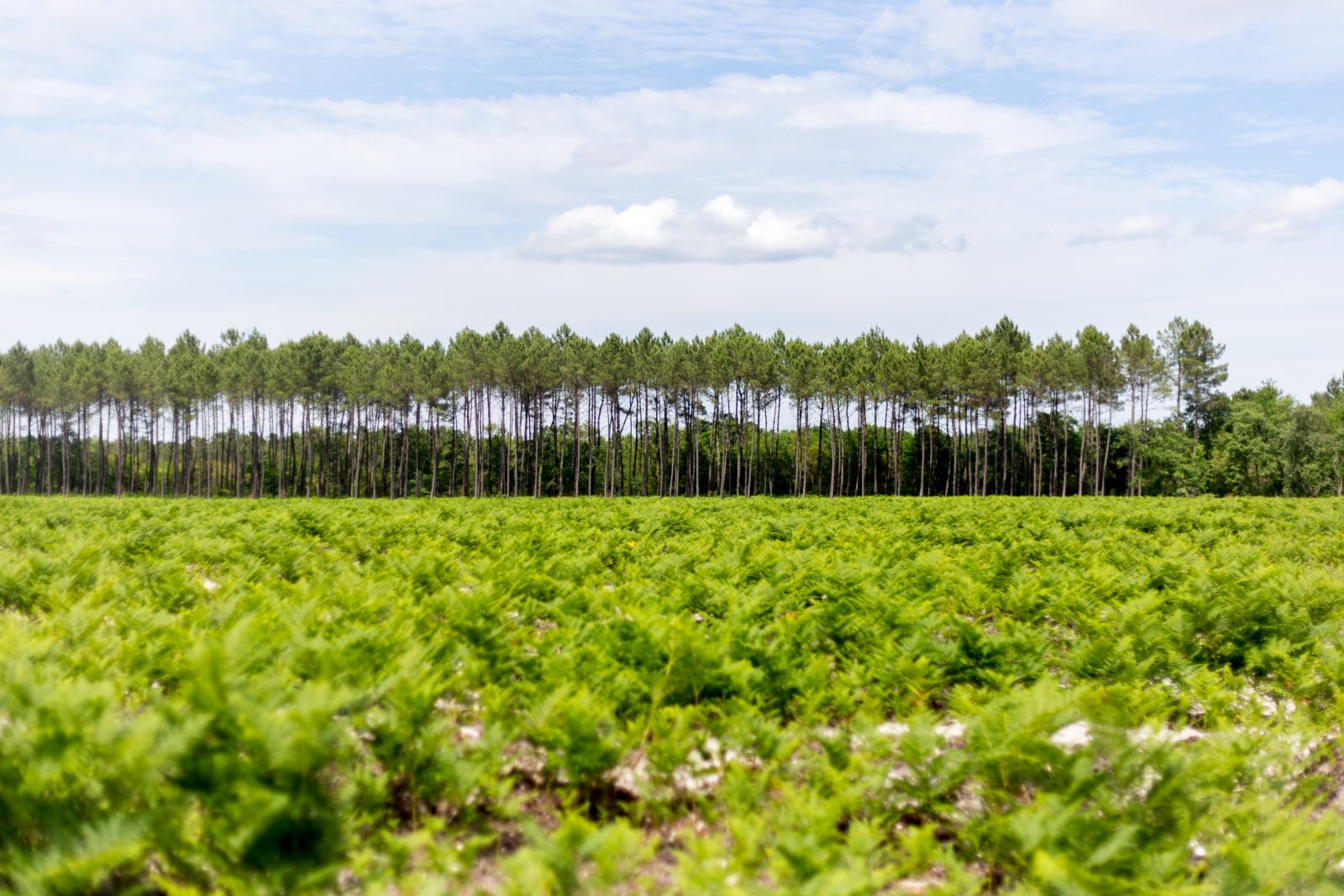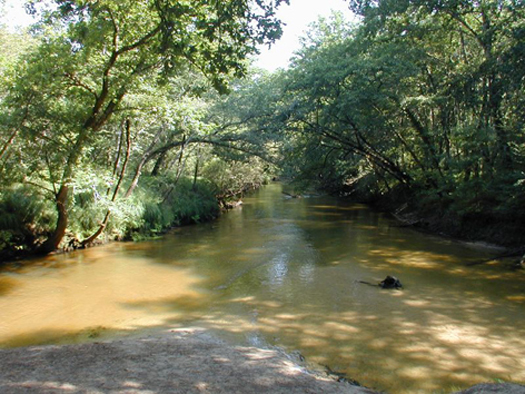Distance: 10,5 km
walk
Duration: 2h
Difficulty : Easy-to-use
LUGOS
Campaigns
Forests
LUGOS
The Saint-Michel de Vieux Lugo church: an emblematic site of the Saints listed as a Historic Monument
A very curious geographical situation… which can be explained by history.
A very curious geographical situation… which can be explained by history.
Your itinerary
1
Departure, parking area, gravel track after the highway bridge
Parking area and assembly point, from Lugos take the direction of Belin-Béliet, cross the motorway bridge and turn left just after. Take the track leading to the church of Old Lugo, go 300 m along the motorway and park on the left, in front of the brande barrier which will be on your right.
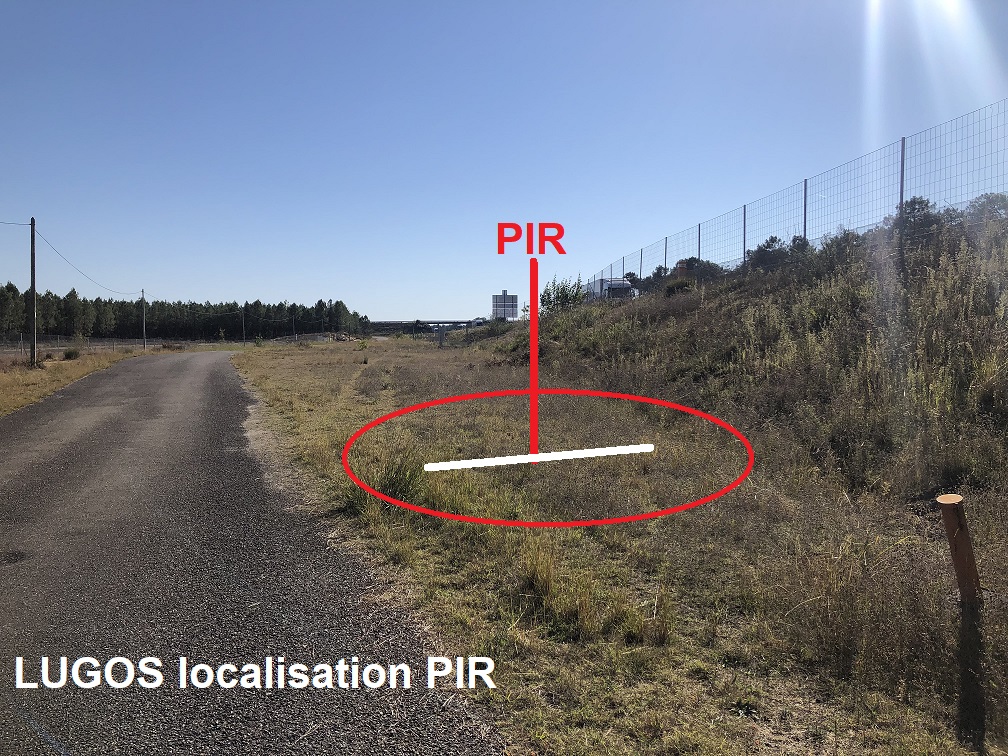
2
Maritime pine harvesting
The Landes de Gascogne forest extends over 1 million hectares in the South West of France. Composed of 90% Maritime Pine. It was Napoleon III who imposed soil sanitation in the Landes, the law of June 19, 1857 then transformed the landscape... It was the beginning of the cultivation of maritime pine! was planted on the Aquitaine coast in the 19th century for several reasons: to fix the dunes, to clean up the marshy ground, to provide a tree that the surrounding population could exploit. A new market economy is taking place: the production forest is on the move. Maritime Pine is a softwood like spruce, Douglas fir, larch, Scots pine or fir. This tree supports poor soils but needs light, heat and humidity, it has the reputation of being frost resistant down to -20°C. Very common in sandy regions, it stabilizes the soil. It can reach 40 meters in height (maturity is however reached from 30-35 meters), its crown is sparse and generally wide. The branches of the lower part fall, even when the tree grows freely, which then twists the trunk. Exploitation is the first stage of transformation and enhancement of production. The clear cut of a plot is intended to Obtaining the maximum possible lumber. Maritime pine harvesting does not only involve clear cutting. During the production cycle, thinning takes place to allow the rest of the stand to develop. What are the objectives: - Silvicultural: It allows the renewal of the stand (regeneration and reconstitution cut) and the growth of future trees (thinning).- Economic: It allows a financial contribution for the owner as well as a supply for the sector.- Environmental and social: It contributes to the maintenance of biodiversity, to the protection of the soil, but also to the welcome to the publicUses: Maritime Pine has a quality wood used in many areas.- Unrolled wood: veneers, plywood panels for construction.- Sawn wood: packaging, parquet, paneling, carpentry, wood construction.- Small-diameter roundwood: pulpwood (paper pulp, particleboard), energy wood.

3
The Devil's Stone
Last town covered by the hiking loop, Lugos is crossed by the Forge and Lugo streams. The archaeological discoveries made in Lugos and Old Lugo attest to a human presence in the Iron Age. An unusual place called The Hand of the Devil, is in the forest. To escape the unsanitary places of Old Lugo, the peasants created the current village on a plateau. in the archaeological literature the Devil's Stone) is located on a hillock (poujeau). It corresponds to an outcrop of large blocks of ferruginous sandstone lying on the sand and carrying enigmatic engravings that we assimilate to the drawing of a hand, in this case that of the Devil. A legend reports that this block would have been abandoned in the middle of the Gironde moor by the Devil himself, on divine injunction, while he was transporting the monolith to the bridge of Dax, to complete the construction of this one. This legend is found, with variations, on various megaliths in the Landes department... This strange stone has aroused the curiosity of many scholars and scholars who have studied this site and interpreted it each in their own way: legends, sacrificial stone or druidic stone, polisher to shape polished axes in the Neolithic...Several archaeological explorations have been carried out on the site: at the foot of the mound and in a rivulet attest to a continuous human presence on the site from the age from bronze to the late Middle Ages. On the site itself were found unturned urns from the Second Iron Age and a Gallo-Roman jug. These objects were deposited at the Local History Museum in Parc Lapios (now closed). The Devil's Hand site was recently upset by machinery during a clear cut by foresters.
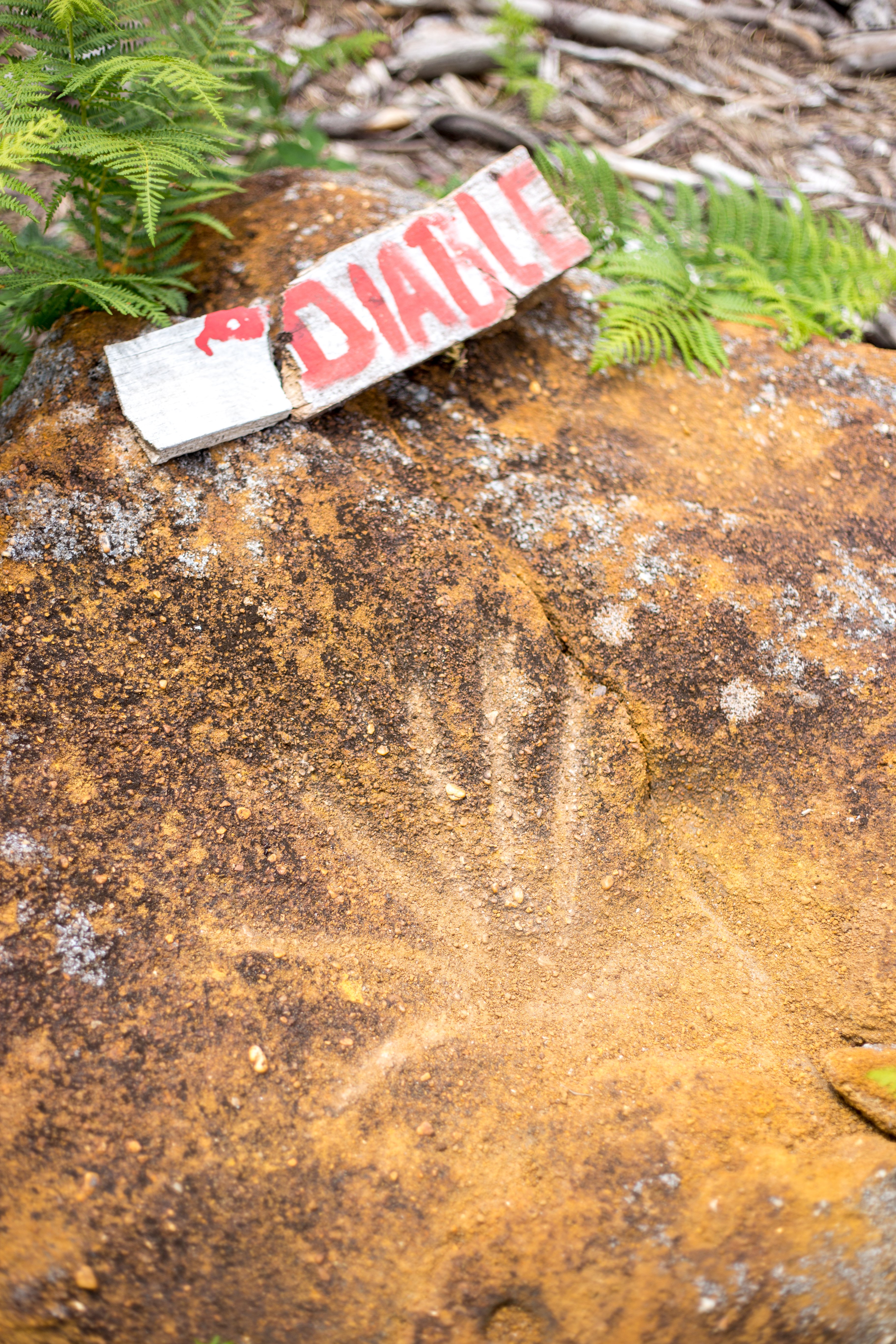
4
The Leyre
La Leyre then played an important role. It allowed the descent of wood in rafts, and probably of charcoal and resin in small boats. It also allowed by towing the rise of salt and fish. In winter, when it overflowed, its crossing presented a major obstacle. This was then done only by boat, which considerably slowed down the transport of people and goods.

5
The Church of Old Lugo
The old parish church of LUGOS, dedicated to Saint-Michel, is located on the old site of the village. This had been established in the High Middle Ages at the crossroads of two old paths passing through a ford on the Leyre, which then flowed, most likely, at the foot of the church. The main route was from Bordeaux to Dax, then to Spain. The second went from La Teste de Buch to Bazas. The houses of the village, probably relatively dispersed, stood on either side of the current access road, on a platform outside the winter floods.

Points of interest

Departure, parking area, gravel track after the highway bridge
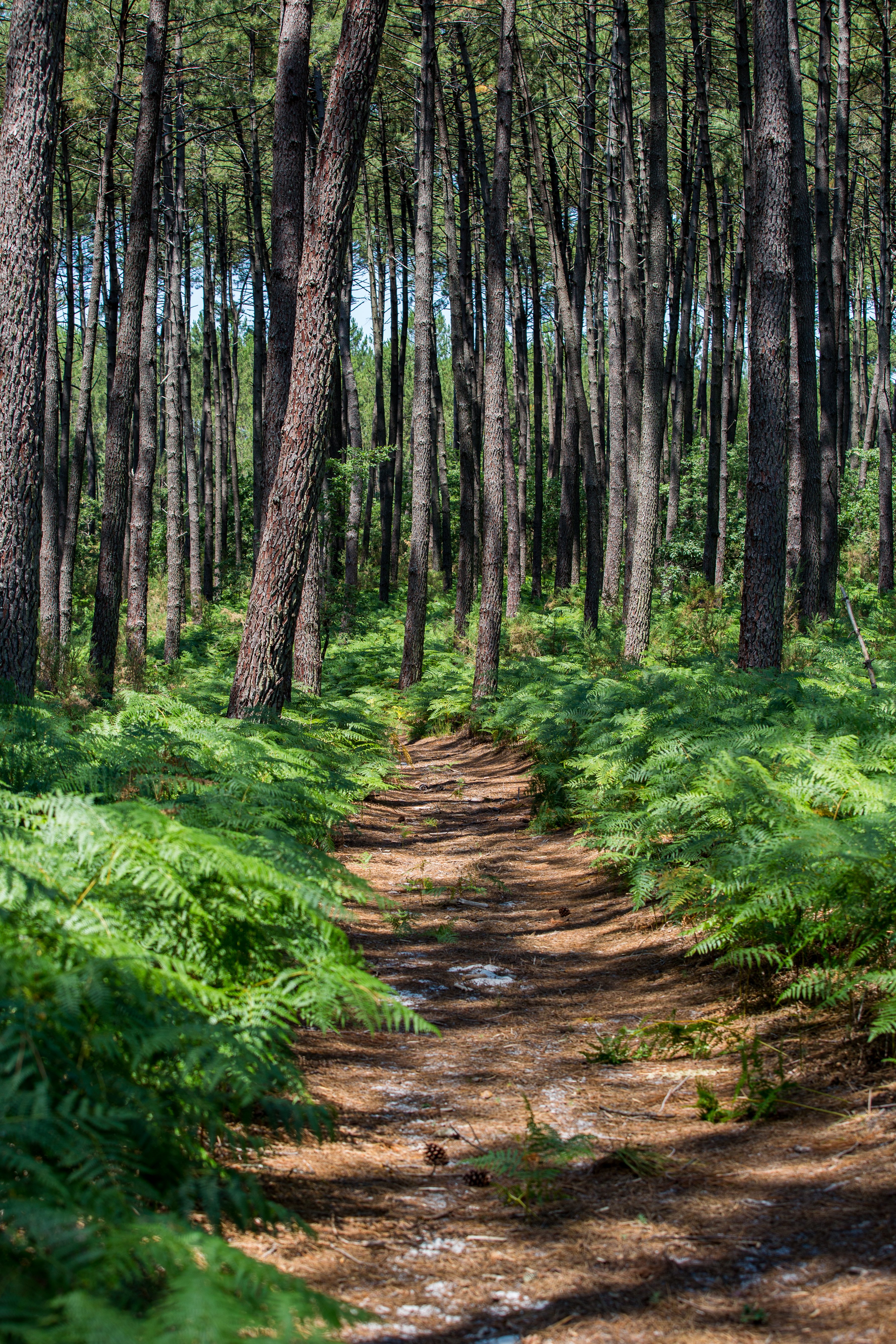
Maritime pine harvesting
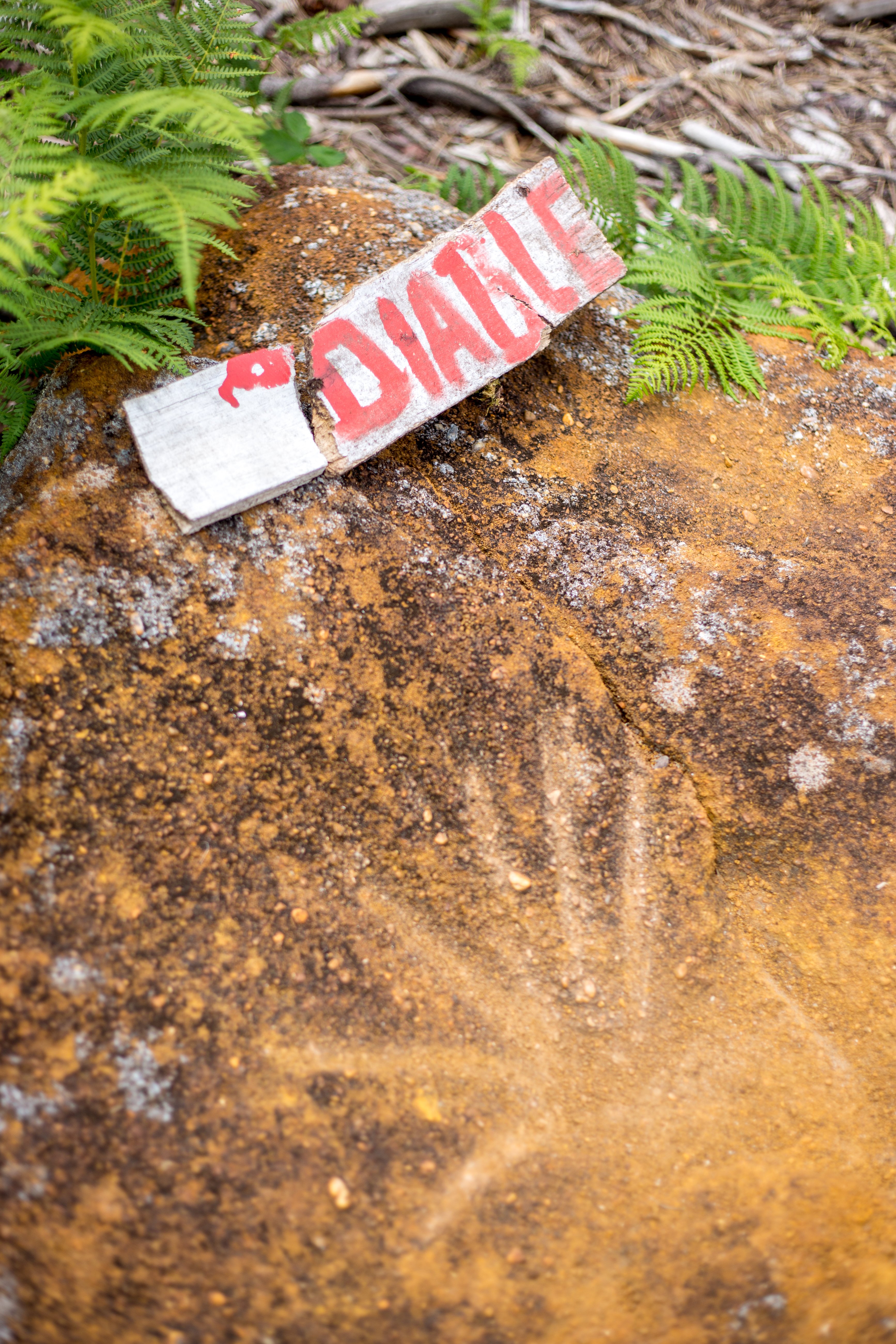
The Devil's Stone

The Leyre

Saint Michel Church in Old Lugo
